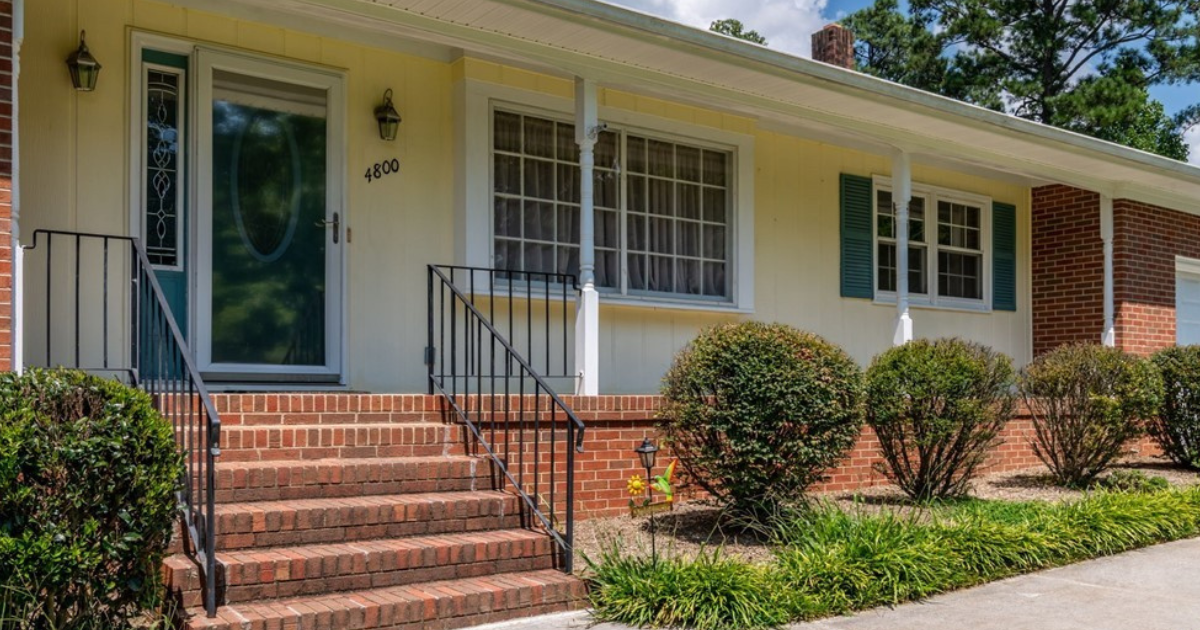When homeowners consider refinancing, they’re usually aiming for one of two goals: to reduce their monthly payment and overall interest paid, or to tap into the equity they’ve built in their home. These two goals are typically accomplished through either a rate-and-term refinance or a cash-out refinance. While both are forms of refinancing, they serve very different financial purposes.
In this article, we’ll break down the key differences between the two, walk through when and why homeowners might choose each option, and show how working with a lender like CapCenter—offering ZERO Closing Cost refinance loans—can make either option far more affordable.
What Is a Rate-and-Term Refinance?
A rate-and-term refinance replaces your existing mortgage with a new one that has different terms—usually a lower interest rate, a different loan term, or both.
You might refinance from a 30-year mortgage to a 15-year to pay off your home faster and save on interest. Or you may refinance to a new 30-year mortgage with a lower rate to reduce your monthly payments. Either way, the primary goal of a rate-and-term refinance is to optimize your mortgage, not to access your home’s equity as cash.
Here are common reasons homeowners choose a rate-and-term refinance:
- Interest rates have dropped since you got your original loan.
- Your credit score has improved, qualifying you for a better rate.
- You want to shorten (or sometimes extend) your loan term.
- You want to switch from an adjustable-rate mortgage (ARM) to a fixed-rate loan—or vice versa.
Because the loan amount in a rate-and-term refinance is generally equal to your current mortgage balance, you’re not borrowing additional funds. That usually means a faster, simpler underwriting process compared to a cash-out refinance.
What Is a Cash-Out Refinance?
A cash-out refinance also replaces your current mortgage with a new one—but with one key difference: you borrow more than you currently owe on your home. The extra amount you borrow is given to you as a lump sum of cash at closing.
This option allows you to convert a portion of your home equity into cash while potentially restructuring your mortgage terms at the same time.
For example, let’s say your home is worth $400,000 and your remaining mortgage balance is $250,000. You might refinance into a new $320,000 loan, using part of the $70,000 difference to pay off your original loan and walking away with the remaining $70,000 (minus any applicable costs or reserves) in cash.
Homeowners often use cash-out refinances for:
- Home renovations or repairs
- Consolidating high-interest debt
- Funding college tuition
- Investing in other real estate or assets
- Building an emergency fund or liquidity buffer
It’s a powerful financial tool—but also a more complex transaction, with stricter qualification standards and typically higher interest rates than a rate-and-term refinance.
Key Differences Between Cash-Out and Rate-and-Term Refinances
While both refinance types involve replacing your mortgage, their purposes and impacts are significantly different. Let’s explore the distinctions across several dimensions:
1. Purpose
- Rate-and-Term Refinance: Primarily used to improve loan terms—lowering the rate, changing the term, or switching loan types.
- Cash-Out Refinance: Used to access home equity as cash for other needs, while possibly improving loan terms.
2. Loan Amount
- Rate-and-Term: Your new loan amount typically equals your remaining mortgage balance.
- Cash-Out: Your new loan is higher than your current balance, and the difference is paid out to you in cash.
3. Interest Rates
- Rate-and-Term: Often has the lowest available refinance rates, especially if your credit and equity are strong.
- Cash-Out: May have slightly higher interest rates due to increased risk for the lender.
4. Equity Requirements
- Rate-and-Term: You can often refinance with as little as 3–5% equity (especially with certain loan programs).
- Cash-Out: Lenders typically require at least 20% equity to qualify, and will often limit the new loan to 80% loan-to-value (LTV).
5. Underwriting & Approval
- Rate-and-Term: Easier and faster to qualify, since the loan amount isn’t increasing.
- Cash-Out: May require more extensive underwriting, stricter credit and income verification, and a full appraisal.
6. Closing Costs
- Both refinance types typically involve closing costs—but CapCenter eliminates that barrier completely. With CapCenter’s ZERO Closing Cost refinance, you keep more of your savings or cash-out funds in your pocket.
Learn more about how we do that here: How CapCenter Refinance Works
Which Refinance Is Right for You?
Deciding between a rate-and-term and a cash-out refinance starts with identifying your primary goal. Ask yourself:
Are you trying to…
- Lower your monthly mortgage payment?
- Lock in a better interest rate?
- Pay off your loan faster?
- Tap into your home equity for cash?
Let’s break it down further by typical use cases.
Scenario 1: You Want to Lower Your Interest Rate or Monthly Payment
If your current mortgage rate is higher than today’s rates—and you’re not looking to take out cash—a rate-and-term refinance is likely your best choice.
Refinancing into a lower rate can save you thousands over the life of your loan and reduce your monthly obligations. This is especially powerful when paired with ZERO Closing Costs, as it eliminates the break-even waiting period common with traditional lenders.
CapCenter Pro Tip: Use our Mortgage Calculator to estimate how much you could save each month with a lower rate.
Scenario 2: You Need Access to Cash for a Major Expense
If you need a lump sum of money and have significant equity in your home, a cash-out refinance can be a cost-effective way to fund home improvements, pay off debt, or cover large expenses without relying on high-interest credit cards or personal loans.
Keep in mind: you’ll likely pay a slightly higher rate than with a rate-and-term refinance. But if you’re consolidating debt, the long-term interest savings could still be significant.
CapCenter Pro Tip: Our Home Value Estimator can help you get a sense of how much equity you have to work with.
Scenario 3: You Want to Shorten or Extend Your Loan Term
Some homeowners use a rate-and-term refinance to shift from a 30-year mortgage to a 15-year term. This typically increases monthly payments but results in much greater interest savings and builds equity faster. Others may switch back to a 30-year to lower their payments if financial flexibility is a priority.
A cash-out refinance can also accomplish this, but keep in mind your new loan amount will be higher—so the payment difference may be less dramatic than expected.
Why ZERO Closing Costs Matter—A Lot
No matter which refinance path you choose, closing costs can take a big bite out of your savings—unless you refinance with CapCenter.
Typical lenders charge 2–5% of your loan amount in closing costs. On a $300,000 refinance, that’s $6,000–$15,000 just to access a better rate or tap into your equity. That money either comes out of pocket at closing or gets rolled into your loan—making your break-even point months or even years away.
At CapCenter, we eliminate all lender fees and cover third-party closing costs, which means your refinance starts benefiting you immediately. Whether you’re lowering your rate or taking out cash, you’re not paying thousands just to close.
It’s the CapCenter difference—and it’s saved our clients tens of millions since we started offering ZERO Closing Cost refinance loans over 25 years ago.
Additional Considerations Before Refinancing
Before you refinance—regardless of type—take time to evaluate:
Your Credit Health
Both cash-out and rate-and-term refinances benefit from higher credit scores. A better score can unlock lower interest rates and greater savings.
Your Home Equity
You’ll need equity to refinance at all—but especially for cash-out. If you’re unsure how much equity you have, we can help you find out.
Your Future Plans
If you’re planning to move soon, a refinance may not make financial sense unless you're accessing equity for another pressing need. But with no closing costs, the breakeven timeline shortens significantly—making a refinance more viable even if you're not staying long-term.
Ready to Explore Your Options?
Whether you’re trying to lower your monthly payment or unlock some of the equity you’ve built in your home, CapCenter can help you make the right move—with transparent advice, great rates, and ZERO Closing Costs.
We make refinancing easy, fast, and affordable—and we’ve helped thousands of homeowners do it with confidence.
Start your refinance journey today:
👉 Check Current Refinance Rates
👉 Estimate Your Home’s Value
👉 Apply Online in Minutes
Frequently Asked Questions
Is it better to do a cash-out refinance or get a home equity loan?
It depends on your goals. A cash-out refinance replaces your entire mortgage and may allow for a lower rate. A home equity loan is a second mortgage that doesn’t affect your current one—ideal if you already have a low interest rate you want to keep. Learn more about CapCenter’s Home Equity Loans.
Can I refinance with bad credit?
It’s possible, but your options may be limited, and your interest rate may be higher. Talk to a lender who can help you assess your eligibility and make a plan to improve your credit if needed.
Will refinancing reset my loan term?
Yes, unless you specifically choose a term that lines up with your remaining years. For example, you can refinance into a 20-year or 25-year mortgage if that fits your timeline better.
How long does a refinance take?
Most refinances take about 30 days, but CapCenter’s streamlined process can often close faster—especially when everything from underwriting to closing is done in-house.




